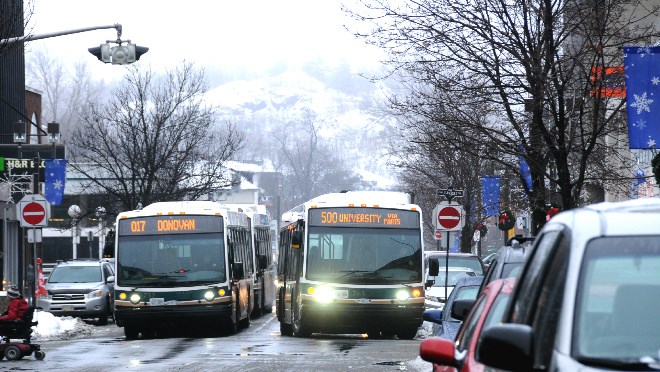There's still no date in place for when Sudbury Transit riders – or would-be riders – will be able to use Google's Trip Planner app.
The app, which is already available in many cities, including North Bay, Ottawa and Toronto, allows users to enter their current location, as well as their destination. The planner then provides information on the closest bus stop, when the next bus arrives and when and how they can reach their destination.
Greater Sudbury media relations officer Shannon Dowling said Tuesday that work has been completed on the city's end. Now they're waiting for Google to finish integrating city transit into its system.
“Everything is in place, in terms of the contract and data and things like that,” Dowling said. “We're waiting for Google to do what they need to do on their end, when it comes to proofing and testing and whatever other protocols they have in place.”
Once that is complete, she said they'll have a better idea of when it will be available to users in Greater Sudbury. Currently, the city's website has several route maps, as well as an app that allows you to enter your bus stop number to get real-time information on when the next bus is arriving.
But you need to know the bus stop number ahead of time, and the app doesn't provide information on how to get to your destination. However, a local group, Friends of Sudbury Transit, has route and other information on its website, friendsofsudburytransit.ca, that makes transit trip planning easier.
In a recent interview, Mayor-elect Brian Bigger said his open data plan will open up that sort of information to the public, making it easier to create apps that will make it easier for the public to take the transit.
“Google Trip Planner is about opening up our data, sharing our data,” Bigger said. “So open data is the solution. There are probably hundreds of (transit) apps, and people will pick their favourite. But the key is not for the city to develop the app. The key is for the city to open the data and just provide it in a universal standard format that app designers can use.”
Bigger said making it easier to take the bus is key to improving flat ridership levels and making transit more sustainable. Not only would it increase ridership revenue, the provinces also gives cities with higher ridership levels more funding from the provincial gas tax.
“If you make it more convenient than driving your car, then people will take the bus,” Bigger said. “And the funding is based on ridership. That's why we need to look at the routes and the route structures. I was born and raised in Sudbury, and they haven't significantly changed in decades. So there's opportunity there.”
It will also make it possible to explore changes to the system, such as creating more hubs beyond the downtown terminal, increasing frequency and number of routes, and calls for improved Sunday service.
“One of the things I've been talking about … is finding ways to make taking transit more convenient for users,” Bigger said. “Revisiting the concept of transit hubs seems to be something that many people agree on. We have to understand what the cost implications are, but it's tough to increase ridership unless you make it more convenient.”
Join Sudbury.com+
- Messages
- Post a Listing
- Your Listings
- Your Profile
- Your Subscriptions
- Your Likes
- Your Business
- Support Local News
- Payment History
Sudbury.com+ members
Already a +member?
Not a +member?
Sign up for a Sudbury.com+ account for instant access to upcoming contests, local offers, auctions and so much more.
